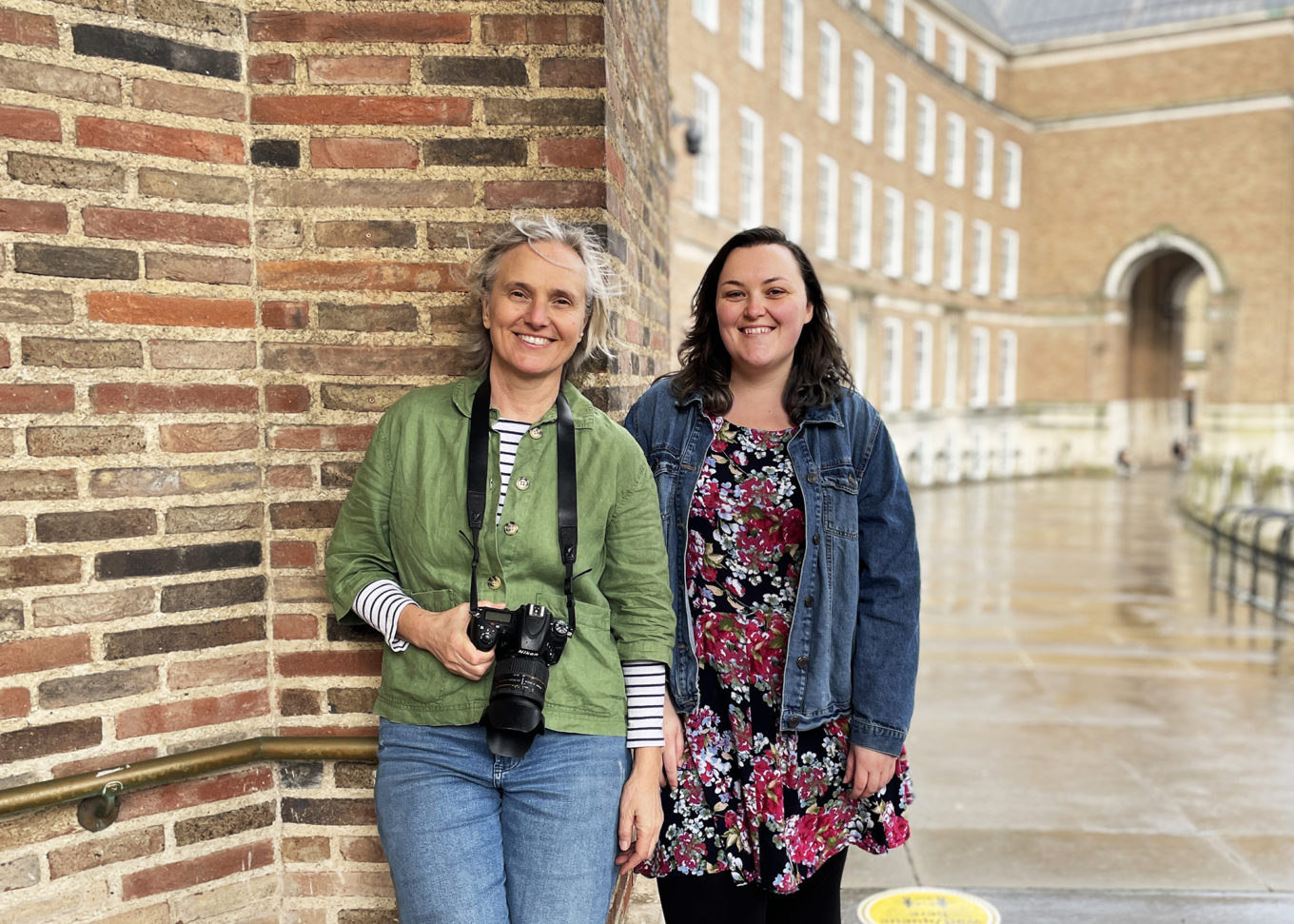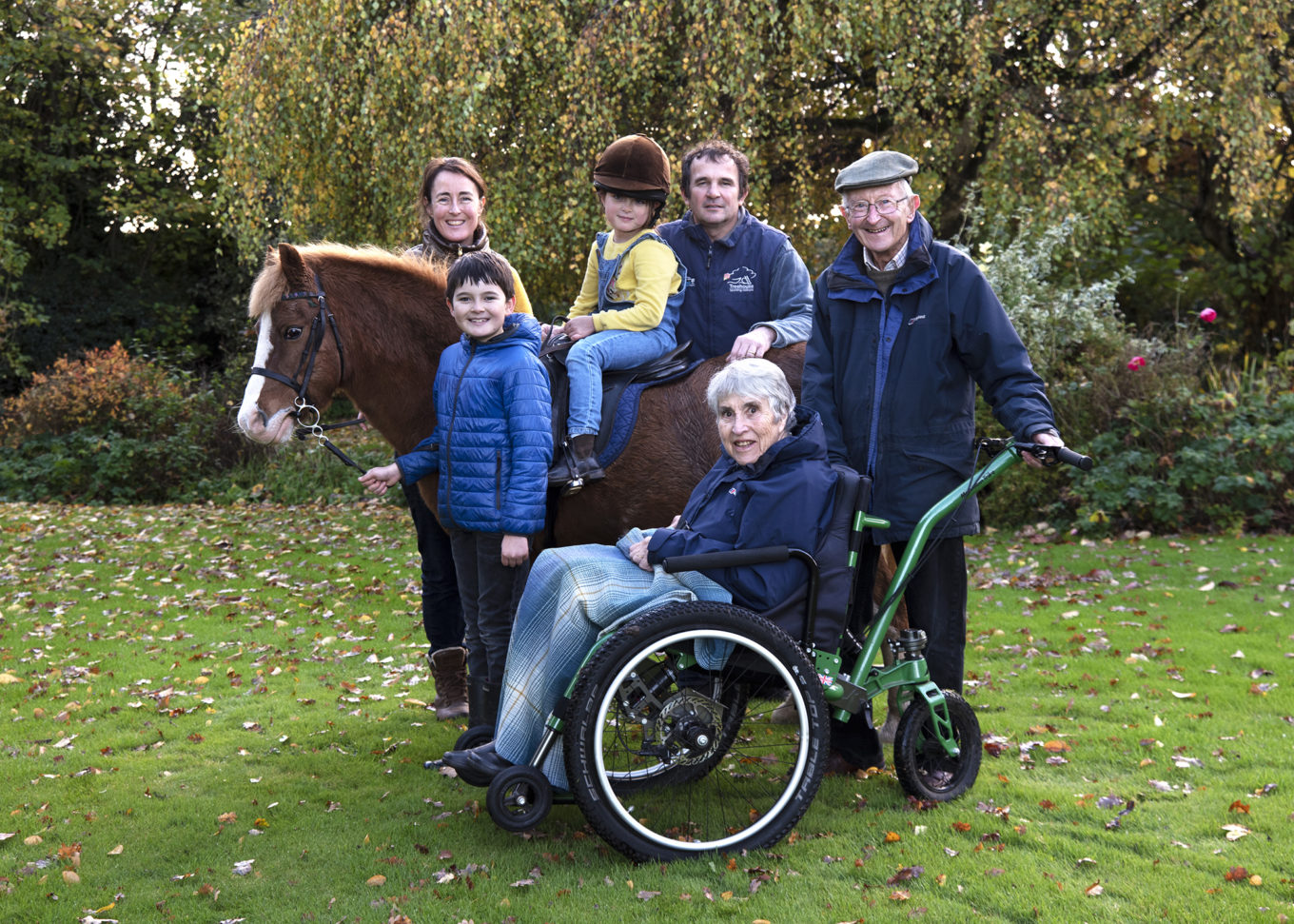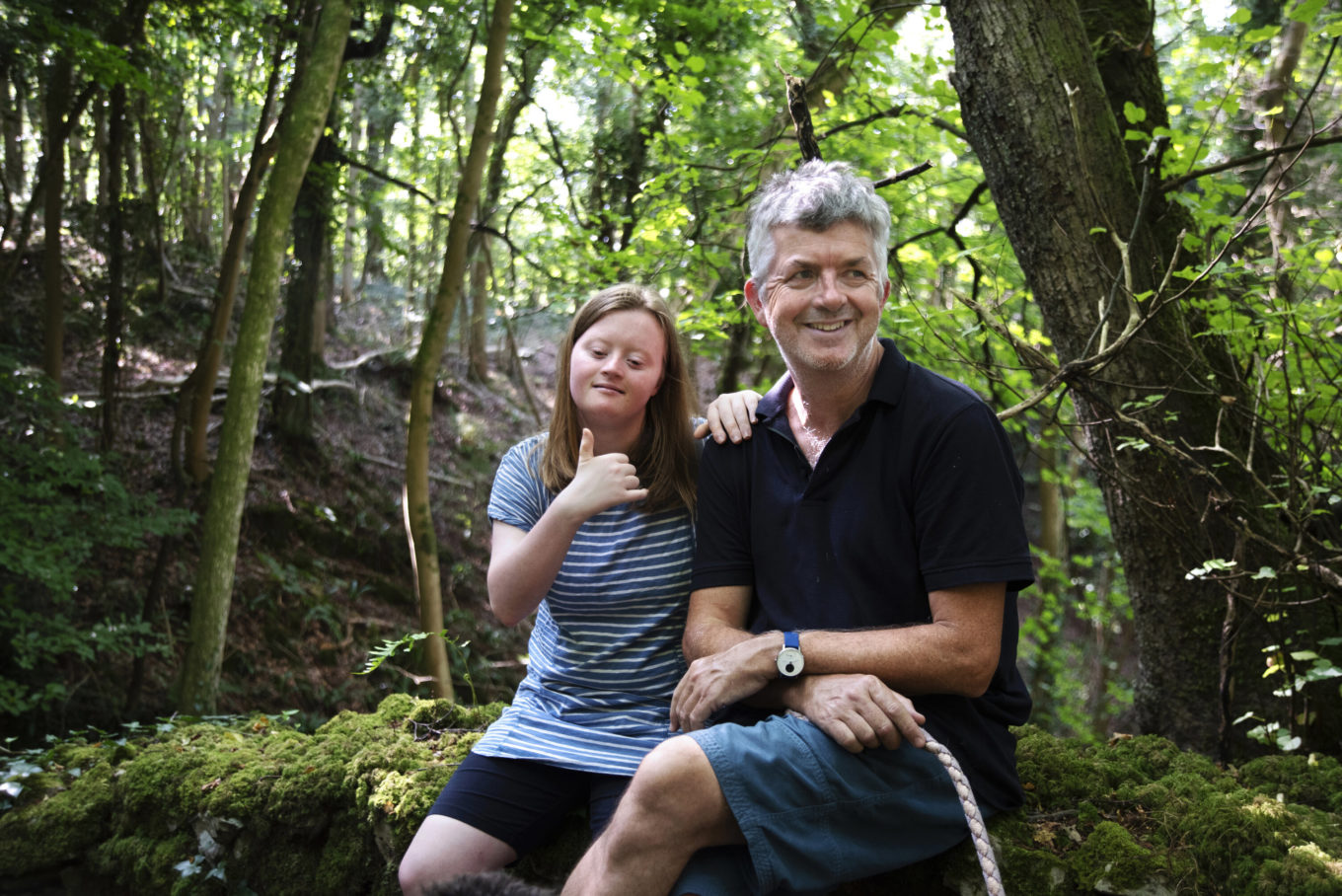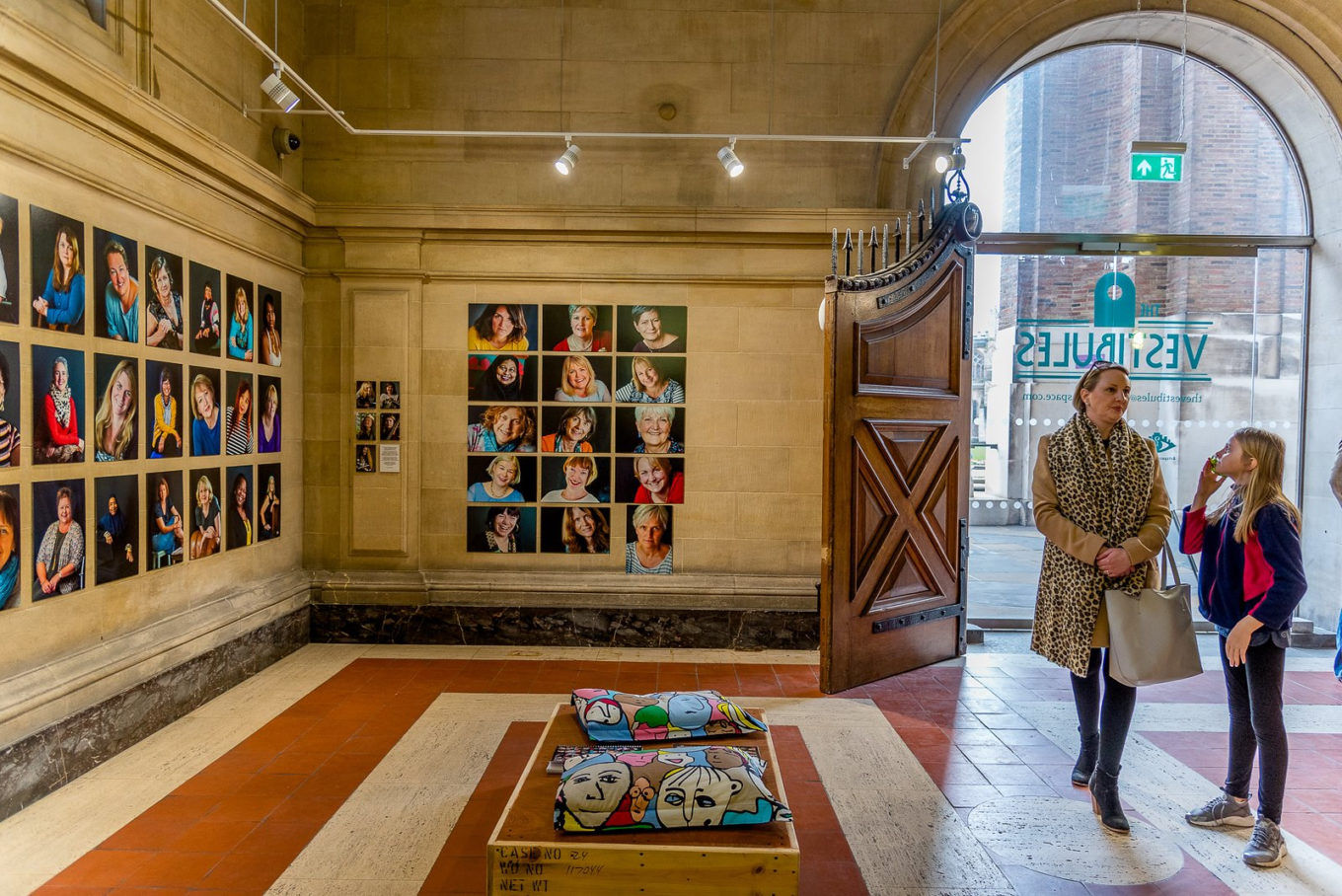Invisible Army Interview by Ella O’Loughlin
Writer Carina Andrews and photographer Tina Gue sat down with Ella O’Loughlin to discuss their collaborative project: Invisible Army. Their work aims to educate people on the real lives of carers in and around Bristol, and, importantly, uplift them.
Invisible Army will be sharing carers’ stories and photographs at The Vestibules in their exhibition “Stories of Carers (Unpaid)”
From Monday 22nd November to Friday 26th November 2021 between 1 pm – 7 pm

To begin, can you talk about how the Invisible Army came to be, what inspired you to start this work? And how you came to work together.
Tina
In 2019 I held an exhibition of my photography at The Vestibules, exhibiting the portraits of 143 women. It turned out some of the women I took portraits of were carers and I found that many of them were quite lonely and their mental health wasn’t very good. There were lots of downs, but there were also lots of ups too. This inspired me to make my next project about carers, at the time I couldn’t find any carers who wanted me to come into their home and take pictures of them. Then Lucie, the coordinator of The Vestibules at the time, got in touch with me saying that some time ago she had an art workshop at The Vestibules organized for carers and Carina went to that, she told Lucie about a project she was doing, writing about carers: 24 hours in the Life of a Carer. And so Lucie introduced us.
Carina
Then we got excited about this potential project and the opportunity to collaborate my skills in writing and Tina’s skills in photography – as well as my experience as a carer to create Invisible Army.
Leading on from that, where does your current project ‘The Voices of Carers’ fit into this, do you have any specific goals for the project?
Carina
We created Invisible Army as the umbrella term to capture the idea that there’s a wide group of people, an army of people, that are working tirelessly to care for someone, while being hidden, while being invisible – while it’s all happening behind closed doors. From that we’ve created projects underneath that and one of them is The Voices of Carers (Unpaid), with the idea that this project will capture what life is like behind closed doors and show what we don’t usually see. We really try to explain what caring is, what it looks like and how it can feel (both the highs and the lows), we aim to really explain the term ‘carer’ to people.
You have two active projects at the moment, The Voices of Carers (Unpaid) and 40,138 what are your goals with these projects?
Carina
The Voices of Carers (Unpaid) is identifying what happens for a carer, what do they see on a daily basis? 40,138 is the number of unpaid carers in Bristol according to the 2011 census What we decided through collaboration with carers, artists and other members of the Bristol Community, was that we could try to make 40,138 flowers, with the idea that a flower has a life, it’s delicate, needs care and has inner beauty. We plan to make that many flowers to create an art installation that grounds all these individual stories. The fact is we’re only capturing around 30 carers’ stories, which is amazing, but there’s 40,000 others in Bristol and we want to show that scale.

What importance do you place on photographing and visualising the people you work with?
Tina
A lot of pictures in the public eye are quite often either studio lit and very smiley, happy and beautiful or they are investigative journalism where they’re quite dire. We would like to show everything that happens in the middle of that. Everyday life with its ups and its downs and its darks and its lights make beautiful pictures of things that maybe aren’t so beautiful. It’s really important for me to creatively capture what it’s like to be a carer. We believe it would be good to show something that is usually hidden. There are not many ordinary photographs of the lives of carers.
Can you go into more detail regarding the process of collecting these stories and photographs?
Carina
We’re trying to utilise the Bristol network of carer’s support, including Bristol Black Carers and Khaas, as well as Rethinks in the mental health carer community, to reach carers. We then have conversations with the carers around the idea of the project, answer any concerns they may have through Zoom, then we go into the carers’ homes so we meet them at their address, to photograph and interview them. The outcome is an archive of carers’ stories that we can share easily.
Finally we share them: we have an exhibition in November at The Vestibules, as well as an exhibition at Vassall Centre in Fishponds afterwards.
When interviewing the unpaid carers, were there any recurring themes that came up, like in their goals or relationship with their position?
Carina
The pressure of caring involves many different duties and responsibilities, how do you balance that with being an individual and being a person’s family member or a friend? How do you balance those responsibilities and your role in that relationship?
A theme that’s come up is about change and transition, whether that is from a person becoming unwell or their parents becoming old and frail. How do you make the decision of becoming a full-time carer and having to pull away from your life, your job and your own family? The idea of trying to adapt to a changed relationship while meeting your own needs as well as the needs of the person you care for. Then, on the flip side, the stories have all been incredibly unique; I think every carer’s story has their own uniqueness and difference. I think it’s important that there’s a connection and that we’re all in this army together but to also acknowledge the individual challenges and joys.

On a broader scale, what are the key issues you think affect unpaid carers?
Carina
Being invisible, even being identified as a carer or registered as a carer, you can still feel alone and isolated, feeling like you’re fighting this battle by yourself. There’s also the key issue of receiving the right care for your loved one, so that you as a carer can have time away to meet your own needs without having a lack of care for them. The role is unvalued which means carers can receive a carers allowance that only equals £1.90 an hour (after looking at eligibility criteria and the funding) which is well under minimum wage; no one can live on £1.90 an hour working 35 hours a week. Unpaid carers are saving the government billions a year.
Do you think your work benefits unpaid carers and in what ways?
Carina
It is about empowering the carer, saying that we want to listen and other people want to listen. We want to show that they don’t have to do it alone and they have rights they perhaps aren’t aware of. We hear them when they’re sharing, it’s hard and it’s challenging, it can be ugly sometimes, but they’re not alone in that. Sometimes it can feel quite patronizing when people say they’re doing something incredible because behind closed doors you’re shouting at the person you care for because they haven’t done what they needed to do, or you’ve not bought a toilet roll for three weeks because there hasn’t been time. Sometimes you feel like you’re not doing things well enough, but we want to say what you’re doing is good enough and you are important. We ask a lot about what their hobbies are away from caring and what their future dreams are like. We ask who they were before they were carers which is as important as having to bathe their loved one or give them medication or so on.
What is the significance of presenting the project in November, which aligns with Carers’ Rights Day?
Tina
That was very purposeful because not only are we always talking about empowering carers, but we would also like to show everybody what it’s like to be one. And to have the exhibition at The Vestibules on carers’ day which has so much significance, will hopefully bring in a lot of people to the space. To normalize it because we don’t often see many pictures of disabled people in public, but I would love for there to be a relaxed communication between disabled people and non-disabled people, and I think we are doing that by showing what it’s like.
Carina
Carers’ Rights Day is an important day for carers that know they are carers but don’t realise that they have rights: they have their right to assessment, they have the right to support, they have the right for their voices to be heard. I think having the exhibition on that date will communicate what the term carer means, show their support needs and their rights, it’s going to be one of those days where we shout about carers and let them know they’re important

Carina, as a carer yourself can you discuss the personal importance of this project?
Carina
I started caring for my mum at the age of five, but I wasn’t identified as a carer until I was 16, so there were 11 years of my life where I was unidentified as a carer and therefore didn’t receive my rights as a young carer. I also couldn’t access any support, which was incredibly isolating but after finding out I learnt that there were loads of other children and adults that were in the same position as me. That felt incredibly powerful and brought me out of this isolated, secret feeling, and made me question why it wasn’t spoken about, why people didn’t know about our lives? From then on I just loved hearing other people’s stories, I love the opportunity to connect with them on a personal level and also hear tips for my future and offer tips for theirs, having that kind of connection through our similar experiences. I want to make sure that nobody feels the way I did, in the sense of having this enormous responsibility on your own and to let people know they don’t have to battle this themselves – they can share their highs and lows with others.
How would you both describe your creative work, would you say it’s a tool for your message as well as a practice in itself
Carina
The creativity is about conversations, it’s about meeting new people, it’s about collaborating and working together to create a final piece. We have the tools in writing and photography, but using them to support the carers, that’s an incredible tool of communication. To share with as many people as possible would be quite difficult without the talent of photography and then to capture the story behind that, the tool of storytelling creates this piece that you would only get if you were invited to their home one day. You don’t often see the inside, you don’t see where they sleep at night or what they eat for lunch.
Tina
For me creativity comes when I am invited into people’s houses that I haven’t met before and who are willing to open their lives for me. That is so exciting and my eyes go everywhere: the lights, the dark, the inside, the outside. I get really excited by it and the journey along with the conversations that arise from it. I try incredibly hard to make beautiful pictures of the situation I’ve been put in; I feel very privileged that they have opened their homes for me to come and photograph them.

Can you briefly discuss your work with The Vestibules?
Carina
Lucie, helped us with our Arts Council funding application and helped us to build a solid foundation for Invisible Army. The Vestibules are beautiful exhibition spaces in an amazing central location, and exhibiting at The Vestibules means we can show the carers we work with that they and their stories are worthy of such a beautiful space. The Vestibules being as prominent as they are means we can reach members of the public just passing by that maybe don’t know what caring is or wouldn’t necessarily attend an exhibition about carers. I think it’s been really valuable working with the team.
What are your plans for the future of the project? Both long-term and short-term.
Carina
The idea of Invisible Army is to continue to create opportunities to run projects with the goal of shining a light on carers who are unpaid. We just want to keep empowering carers to share their own stories and support them to make the public listen. Where they take us, who knows? It’s really exciting when we meet carers and they have their own ideas about what they wish to do. We met a carer who wanted to write a book and now she’s written a book. We met a carer who wanted to create a petition to get Bristol City Council to think about disabled adult play parks, which we set up with her and she got almost 50,000 signatures, so we’ll follow that story, take some photos of the disabled adult park that’s soon to be open. We want to support carers in the projects they’re carrying out.
It could go in many directions, that’s exciting and we’re going to see what happens, that’s the creative process: having those conversations and seeing what happens.
For more information on the Invisible Army project or to get in touch with Carina and Tina, please head to the Invisible Army website.